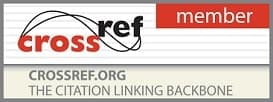ISSN: 2456-4419, Impact Factor (RJIF): 5.88
Peer Reviewed Journal
2018, Vol. 3 Issue 1, Part C
Relationship between emotional intelligence and self-efficacy in research among Dharwad physical education teachers
AUTHOR(S): Kum Shivamurthi Chikkanarti and Kum Shivanand Jattennavar
ABSTRACT:
The self-efficacy beliefs affect teacher's stability in a situation that teaching process does not progress easily, in a way that higher self-efficacy enables teacher to behave better which students who have committed mistake. It also enables them to work more with children and feel fewer tendencies towards sending stubborn students to the authorities. Teachers having more sense of self-efficacy are enthusiasm and commitment to teach. For this regard, factors relating to self-efficacy in teaching teacher in every level should be interpreted with care. According to findings of present research, components of emotional intelligence is not exempt from this regulation and perhaps by improving capabilities of emotional intelligence among physical education teachers improve beliefs of self-efficacy.
The self-efficacy beliefs affect teacher's stability in a situation that teaching process does not progress easily, in a way that higher self-efficacy enables teacher to behave better which students who have committed mistake. It also enables them to work more with children and feel fewer tendencies towards sending stubborn students to the authorities. Teachers having more sense of self-efficacy are enthusiasm and commitment to teach. For this regard, factors relating to self-efficacy in teaching teacher in every level should be interpreted with care. According to findings of present research, components of emotional intelligence is not exempt from this regulation and perhaps by improving capabilities of emotional intelligence among physical education teachers improve beliefs of self-efficacy.
The purpose of this research was to find the relationship between emotional intelligence and job self-efficiency in research courses among Dharwad physical education teachers. 200 physical education teachers (124= M, 76=F) were randomly selected from different Dharwad universities. Bar-on Emotional and Self- efficiency job questionnaires were used to evaluate the teachers’ attitudes. Pearson correlation coefficient was used to investigate the relationships between the variables at p<0.05 level. The results demonstrated a significant relationship between emotional awareness, empathy, and self- efficiency. The results of variance analysis for regression research self efficiency was significant according to emotional intelligent components.
Pages: 147-149 | 1869 Views 243 Downloads

How to cite this article:
Kum Shivamurthi Chikkanarti, Kum Shivanand Jattennavar. Relationship between emotional intelligence and self-efficacy in research among Dharwad physical education teachers. Int J Yogic Hum Mov Sports Sciences 2018;3(1):147-149.







 Other Journals
Other Journals